

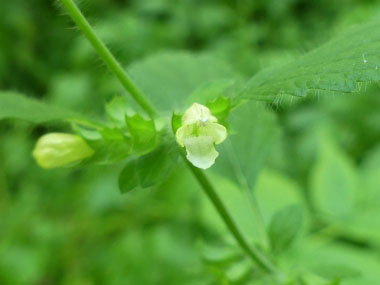
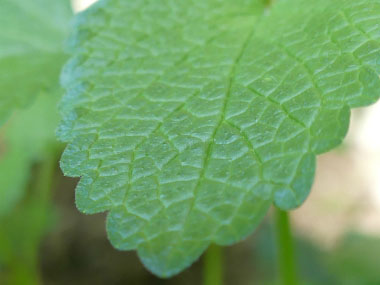
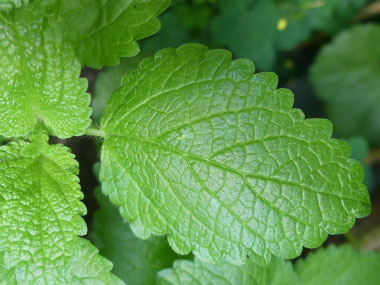
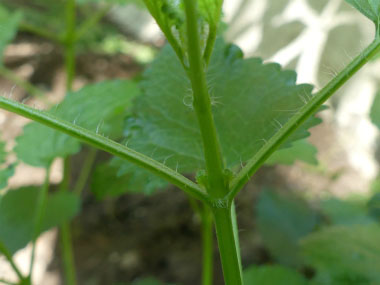
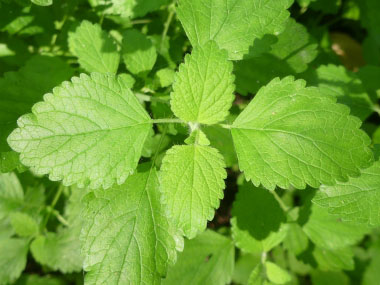
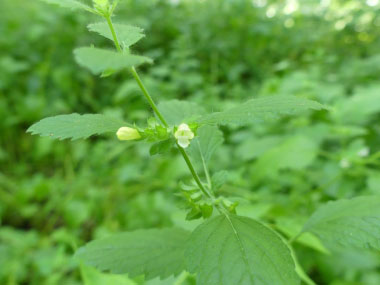
To support our efforts please browse our store (books with health benefits, etc.).
Lemon balm is a lemon-scented, aromatic perennial plant that is in the Lamiaceae (mint) family. Although recognized in Canada and the U.S. as a cultivated plant, lemon balm has naturalized in many area far from cultivated gardens. This plant grows in the wild in many countries world wide. Genus name comes from the Greek word melissa meaning a honeybee, also the name of a Cretan princess who first discovered how to obtain honey.
Distinguishing Features
This mint has serrated (somewhat) heart-shaped leaves and whorls of small white flowers. Lemon Balm is a fairly typical example of plants in the mint family. Its foliage usually has a mild lemon fragrance, otherwise this plant is rather similar to several other species in the mint family with small whitish flowers.
Flowers
Pale white labial flowers, which are approximately 1 cm in size, grow from the leaf axils in semi-verticils. Lemon balm flowers anywhere from June to September depending on geographic location.
 Fields
of Nutrition has medicinal benefits and vitamin/mineral content of Lemon Balm.
Fields
of Nutrition has medicinal benefits and vitamin/mineral content of Lemon Balm.
Leaves
The opposed leaves, whose stalked stems vary in length, are broadly oval to heart-shaped and have an irregular crenate (rounded teeth) or serrate (small, sharp teeth) edge. The dark green upper surface of the leaf is sparsely haired and has very prominent veins.
Height
Lemon balm can grow up to 80 cm tall (30”). The stem is a shaped like a square (like all mints) and can branch.
Habitat
Native to the Mediterranean and various regions in Northern Africa, Western Asia, and Southern Europe, it is widely cultivated and has naturalized throughout the world in temperate areas. It can tolerate a variety of soils and although it can grow in shady locations, it much prefers sunny locations at elevations up to approximately 1000 metres.
Edible Parts
Leaves are commonly used as a relaxing tea. They can be added into many dishes in which the lemon flavour can be enjoyed. Lemon balm has been added to many desserts including ice cream and custards. It is always to be used fresh when using for food (other than a tea).
Other Name
Melissa balm.
Similar Plants
Recipes
Champagne Vinegar, Immune Tonic, Lemon Balm Cookies, Lemon Balm Ice Tea, Lemon Balm Spirit, Lemon Balm Tea, Lemon Balmsicles, White Wine Vinegar
Winter Survival Food Handbook

PDF Plant Magazines
Types of Wild Food
Geographic Zones Seasons
Disclaimer
EdibleWildFood.com is informational in nature. While we strive to be 100% accurate, it is solely up to the reader to ensure proper plant identification. Some wild plants are poisonous or can have serious adverse health effects.
We are not health professionals, medical doctors, nor are we nutritionists. It is up to the reader to verify nutritional information and health benefits with qualified professionals for all edible plants listed in this web site. Please click here for more information.
Why Edible Wild Food?
- Food costs are rising
- Free, wild food is readily abundant
- Wild food adds nutrition to your diet
- Wild food can help treat various medical conditions





